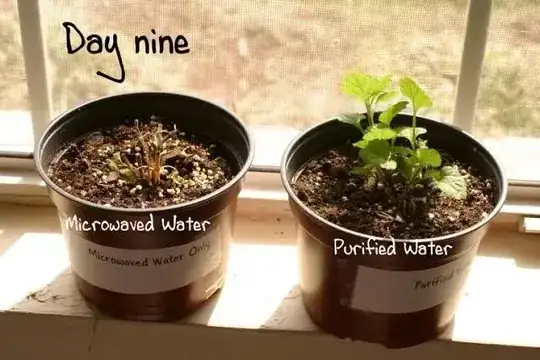I have seen this story a couple of times in my facebook newsfeed and it strikes me as highly unlikely. The story goes:
Below is a Science fair project presented by a girl in a secondary school in Sussex. In it she took filtered water and divided it into two parts.
The first part she heated to boiling in a pan on the stove, and the second part she heated to boiling in a microwave.
Then after cooling she used the water to water two identical plants to see if there would be any difference in the growth between the normal boiled water and the water boiled in a microwave.
She was thinking that the structure or energy of the water may be compromised by microwave.
As it turned out, even she was amazed at the difference, after the experiment which was repeated by her class mates a number of times and had the same result.

So does microwaved water kill plants?
Is there any structural difference between water boiled on a stove top and water boiled in a microwave?
(Bonus points for confirming/debunking any other statements in the original article. Please cite sources of evidence.)